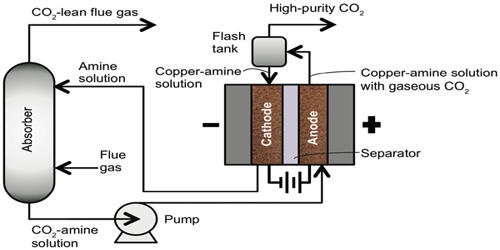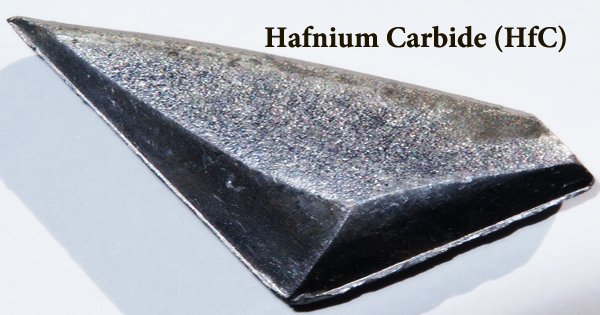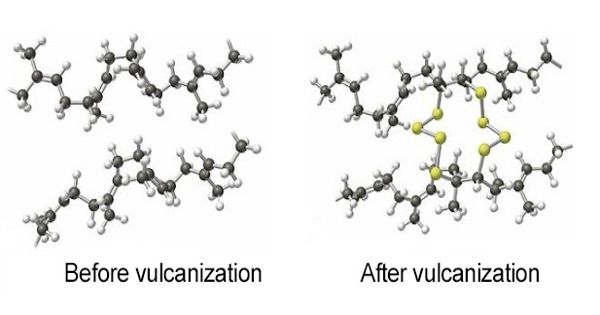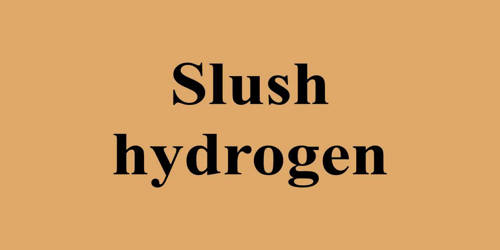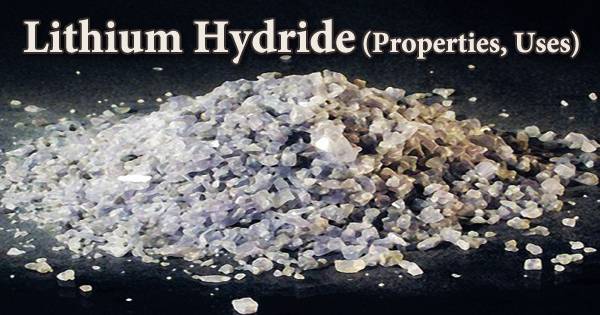Lead hydrogen arsenate is a poisonous white crystalline compound used in insecticides and herbicides. It was an obsolete highly toxic insecticide used to control pests in both cropped and non-cropped situations. It is also called lead arsenate, acid lead arsenate, or LA, chemical formula PbHAsO4, which is an inorganic insecticide used primarily against the potato beetle. It was used successfully against moths and other pests, particularly in the US.
Lead arsenate was the most extensively used arsenical insecticide. It is a pentavalent form of inorganic arsenic. It normally
exists as white crystals with no discernible odor. Within the EU, it was used extensively in the UK and France until after the Second World War. Two principal formulations of lead arsenate were marketed: basic lead arsenate (Pb5OH(AsO4)3, and acid lead arsenate (PbHAsO4). Lead arsenate is moderately toxic to birds, slightly toxic to fish, and moderately toxic to aquatic invertebrate species.
Production and structure
It is usually produced using the following reaction, which leads to the formation of the desired product as a solid precipitate:
Pb(NO3)2 + H3AsO4 → PbHAsO4 +2 HNO3
It has the same structure as the hydrogen phosphate PbHPO4. Like lead sulfate PbSO4, these salts are poorly soluble. It is a white insoluble toxic crystalline powder used as an insecticide and fungicide.
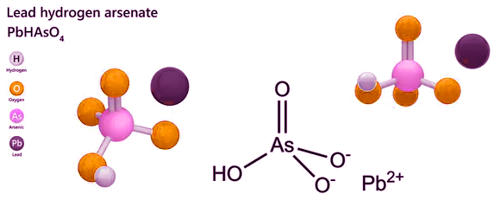
Fig: Lead Hydrogen Arsenate Chemical structure
The crystallization of mimetite gives rise to very low concentrations of dissolved arsenic and lead, removing them from solution even under conditions where other lead-containing phases normally crystallize.
Uses
- Lead arsenate is currently used as a growth regulator on 17% of the U.S. grapefruit crop.
- As an insecticide, it was introduced in 1898 used against the gypsy moth in Massachusetts. It represented a less soluble and less toxic alternative to then-used Paris Green, which is about 10x more toxic. It has been used from the beginning of the 20th century as insecticides, causing some soils to be contaminated with both lead and arsenic.
- Lead arsenate was widely used in Australia, Canada, New Zealand, US, England, France, North Africa, and many other areas, principally against the codling moth and snow-white linden moth. It was used mainly on apples, but also on other fruit trees, garden crops, turfgrasses, and against mosquitoes.
- The search for a substitute was commenced in 1919, when it was found that its residues remain in the products despite washing their surfaces.

